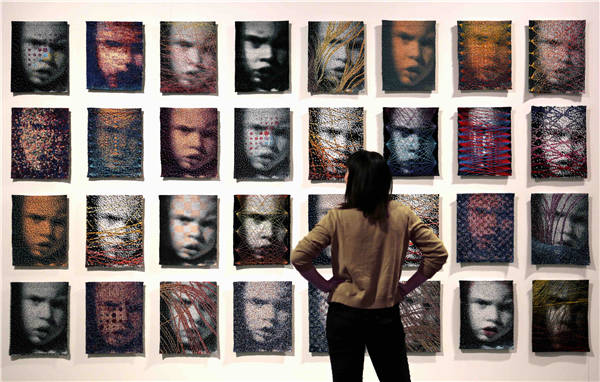

Technology and Innovation in Fiber Art, a virtual exhibition organized by two universities from China and the United States, offers a glimpse into the development of contemporary fiber art-what happens when traditional art incorporates high-tech material.
The joint online show by the Academy of Arts and Design of Tsinghua University and the University of the Arts Philadelphia features 20 artists from China and 20 from the US who take various approaches and use different materials to explore themes via fiber art.
"These artists expand and combine the traditional techniques of weaving, knotting, coiling and interlacing with cutting-edge technologies. They have pushed the boundary of their medium to try new materials," says Yue Song, a co-curator of the show from Tsinghua University.
Fiber art is not limited to materials like silk, wool and cotton. New materials such as optical fiber, chemical fiber and memory alloy can be seen in the works presented.
The Moment, a work by Gao Jing and Lu Qi, re-creates the process of flowers blooming, attracting butterflies and then dying. The twigs of the magnolia in the artwork are rendered with traditional embroidery while the petals are created with a flexible memory alloy to make them open and close.
Yue's work Information-Ecology-Growth uses optical fibers to create an installation of luminous trees, a piece collected by the China Science and Technology Museum.
More than half of the artworks on display explore new technologies such as sensors, human-computer interaction and digital and information technology.
US artist Lia Cook's Su Series contains 32 images of the same face, each translated differently via the weaving process. Some patterns are woven with data visualization of viewers' responses to the woven images and some with neurological scans.